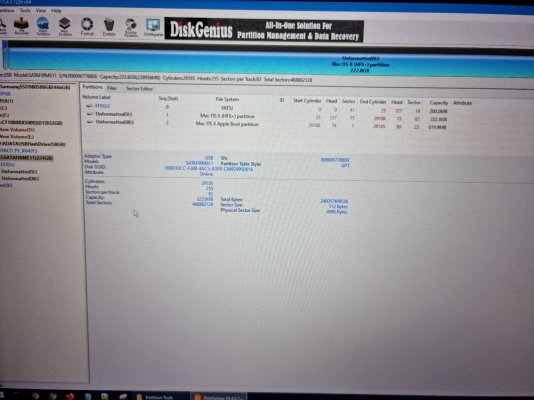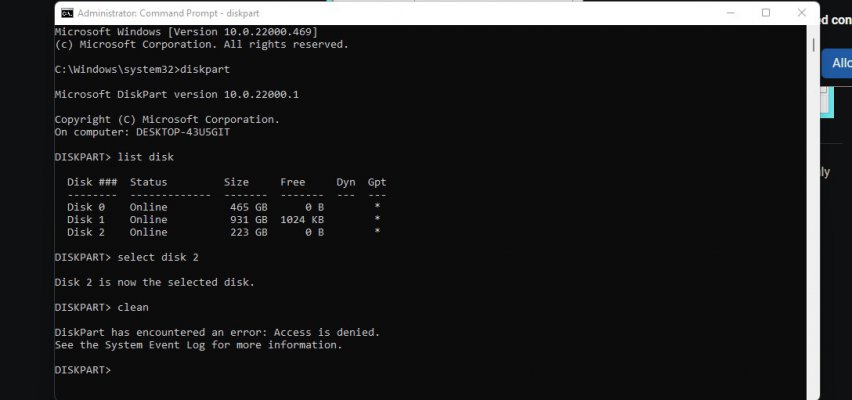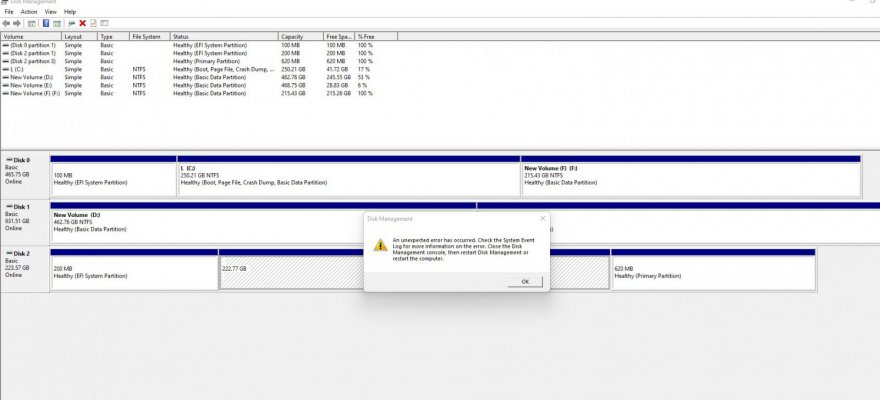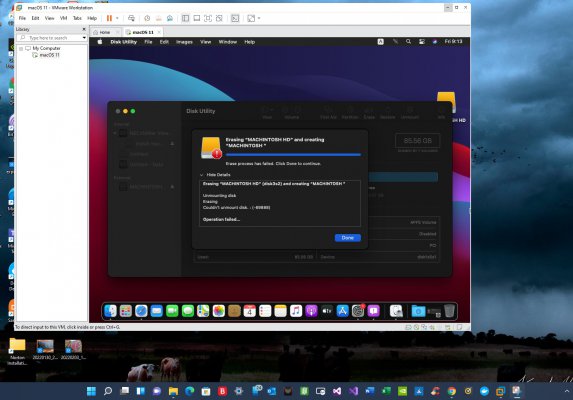You are using an out of date browser. It may not display this or other websites correctly.
You should upgrade or use an alternative browser.
You should upgrade or use an alternative browser.
Need Help Formatting A Kingston SSD ?
- Thread starter Ankit2306
- Start date
Booting up with a live usb for any linux distro should be able to handle it, or a windows recovery disc/usb maybe. i'd suggest creating a bootable usb with gparted, it'd the easiest.
Ankit2306
Disciple
What live usb or linux live cd would you suggest ?Booting up with a live usb for any linux distro should be able to handle it, or a windows recovery disc/usb maybe. i'd suggest creating a bootable usb with gparted, it'd the easiest.
GParted https://gparted.orgWhat live usb or linux live cd would you suggest ?
Sorry if that was confusing, I meant create a bootable usb with GParted on it, not create a bootable usb using GParted.
You can use https://rufus.ie/en/ to create the bootable usb.
Ankit2306
Disciple
i tried formatting with gparted , but it was unable to format the drive ..........GParted https://gparted.org
Sorry if that was confusing, I meant create a bootable usb with GParted on it, not create a bootable usb using GParted.
You can use https://rufus.ie/en/ to create the bootable usb.
Huh, i dunno then. i know nothing of how macs handle storage, maybe someone else can chip in.
Titokhan
Disciple
i tried formatting with gparted , but it was unable to format the drive ..........
@Ankit2306
It would be better if you post the exact error message and/or a screenshot of the error log.
In case of Windows, you should be able to wipe out APFS-formatted volumes using diskpart. You can also use the manufacturer-provided tool to securely erase the SSD. But first, start with the screenshots.
Ankit2306
Disciple
These are the partitions that i want get rid of , i am trying to delete it , it gives me an error stating unable to complete the operation , same thing happens if i try to reformat it . Only disk genius was able to identify the partitions , other bootable partition tools simply wont recognize it
Got access denied while formating in Diskpart .........
While formatting in disk management this the error that i am getting .........
Got access denied while formating in Diskpart .........
While formatting in disk management this the error that i am getting .........
Attachments
Last edited:
Titokhan
Disciple
@Ankit2306
Kindly share the output of the following command after selecting the target disk in diskpart:
On another note, are you using some kind of SATA to USB adapter to connect the disk to your PC?
===
Gotcha, the clue is present in the first screenshot. See that "SATAFIRMS11" tag on the SSD? It's there because the Phison controller of the SSD is borked. Depending on the current state, it might be possible to repair it by reinstalling the controller firmware.
Before attempting the flashing job, make sure to note down the exact IDs of the controller and the NAND flash of your SSD. In case the SSD in question is still under warranty, it is better to opt for RMA.
Code:
attributes diskOn another note, are you using some kind of SATA to USB adapter to connect the disk to your PC?
===
Gotcha, the clue is present in the first screenshot. See that "SATAFIRMS11" tag on the SSD? It's there because the Phison controller of the SSD is borked. Depending on the current state, it might be possible to repair it by reinstalling the controller firmware.
Before attempting the flashing job, make sure to note down the exact IDs of the controller and the NAND flash of your SSD. In case the SSD in question is still under warranty, it is better to opt for RMA.
Last edited:
Ankit2306
Disciple
tried that already , issue remains , i mean What Apple wants ? an Apple device to even format also ? ridiculous ...............i hope you get it bro@Ankit2306
Kindly share the output of the following command after selecting the target disk in diskpart:
Code:attributes disk
On another note, are you using some kind of SATA to USB adapter to connect the disk to your PC?
Ankit2306
Disciple
Bro can you please elaborate or atleast a link , i have no idea ...........Could do the trick. But you will need sg3tools on the usbkey.Bash:sgdisk --zap-all
Okay, I am assuming that you know how to create a boot disk using rufus/unetbootin etc...
I am showing this using ubuntu 21.10 because the image has all the required tools that you would need.
when you boot the usb key and connect the kingston hdd, you will see it in the gparted gui tool. something like this...
you will need the device name from the above screen on the title bar. for example in the above screen you have /dev/sdc (sdc is the drive and sdc1 etc... are partitions.)

now what we need to do is zap the disk. basically write zeros where the gpt/mbr partition tables are... this can be done with a dd command line tool but there is a easier way. i.e., sgdisk --zap-all; sgdisk -p /dev/sdc will give you information about the disk before you destroy it.
to execute the command, you open terminal and type
Thats it.
if you want to know if the above commands succeeded; type "echo $?" after each command to know the return code. a zero return code means success.

I am showing this using ubuntu 21.10 because the image has all the required tools that you would need.
when you boot the usb key and connect the kingston hdd, you will see it in the gparted gui tool. something like this...
you will need the device name from the above screen on the title bar. for example in the above screen you have /dev/sdc (sdc is the drive and sdc1 etc... are partitions.)
now what we need to do is zap the disk. basically write zeros where the gpt/mbr partition tables are... this can be done with a dd command line tool but there is a easier way. i.e., sgdisk --zap-all; sgdisk -p /dev/sdc will give you information about the disk before you destroy it.
to execute the command, you open terminal and type
Bash:
sudo sgdisk --zap-all /dev/sdc
syncThats it.
if you want to know if the above commands succeeded; type "echo $?" after each command to know the return code. a zero return code means success.
Ankit2306
Disciple
Thanks bro will update after trying the above mentioned steps.........Okay, I am assuming that you know how to create a boot disk using rufus/unetbootin etc...
I am showing this using ubuntu 21.10 because the image has all the required tools that you would need.
when you boot the usb key and connect the kingston hdd, you will see it in the gparted gui tool. something like this...
you will need the device name from the above screen on the title bar. for example in the above screen you have /dev/sdc (sdc is the drive and sdc1 etc... are partitions.)
View attachment 125554
now what we need to do is zap the disk. basically write zeros where the gpt/mbr partition tables are... this can be done with a dd command line tool but there is a easier way. i.e., sgdisk --zap-all; sgdisk -p /dev/sdc will give you information about the disk before you destroy it.
to execute the command, you open terminal and type
Bash:sudo sgdisk --zap-all /dev/sdc sync
Thats it.
if you want to know if the above commands succeeded; type "echo $?" after each command to know the return code. a zero return code means success.
View attachment 125555
Regards
isn't this the same as running clean using diskpart? if the controller is ****ed like titokhan mentioned, this probably won't work either right?now what we need to do is zap the disk. basically write zeros where the gpt/mbr partition tables are
I don’t think the controller is ****ed. But yeah, if controller is gone then it’s better to rma.isn't this the same as running clean using diskpart? if the controller is ****ed like titokhan mentioned, this probably won't work either right?
On the part about being same as diskkpart; i honestly don’t know. But sg3tools work by issuing scsi commands and not the regular read/write ioctls. Which means they work at a lower level in the driver stack.
Last edited:
Hachune
Disciple
This is a kingston ssd so I see no reason why Windows wont format it, whether previously used in mac or not. I always format my ssds which is used for my hackintosh on Windows.
If you think macos is able to format it, you can try enabling hot plugging in the bios and format it on a macos Virtual Machine.
If you think macos is able to format it, you can try enabling hot plugging in the bios and format it on a macos Virtual Machine.





